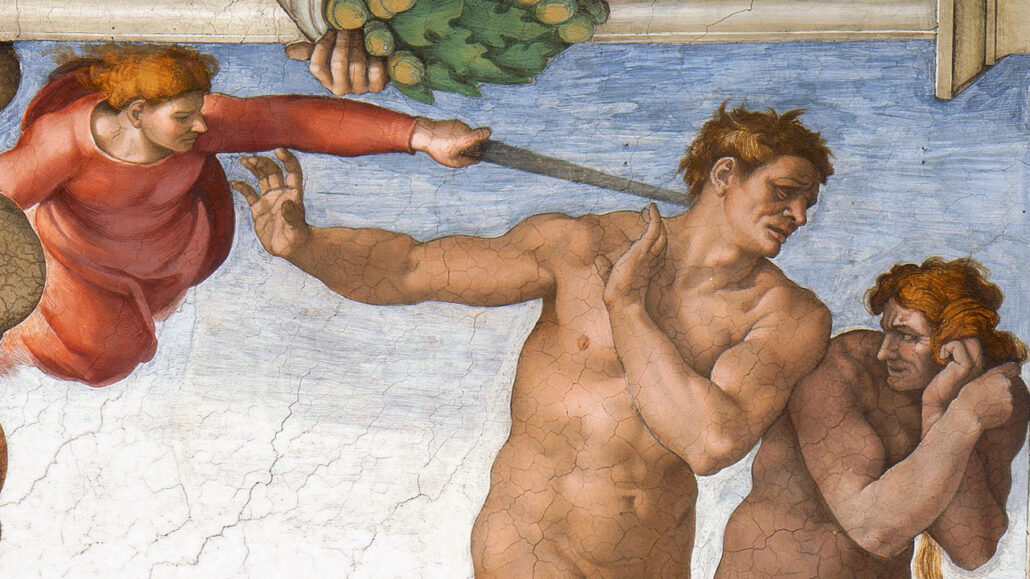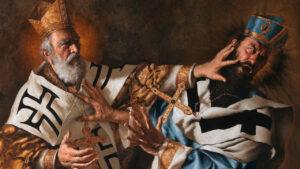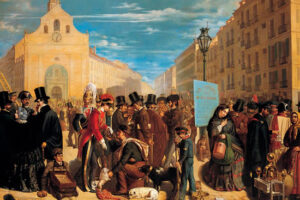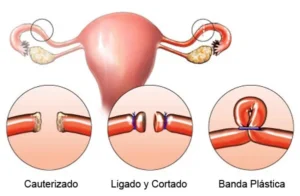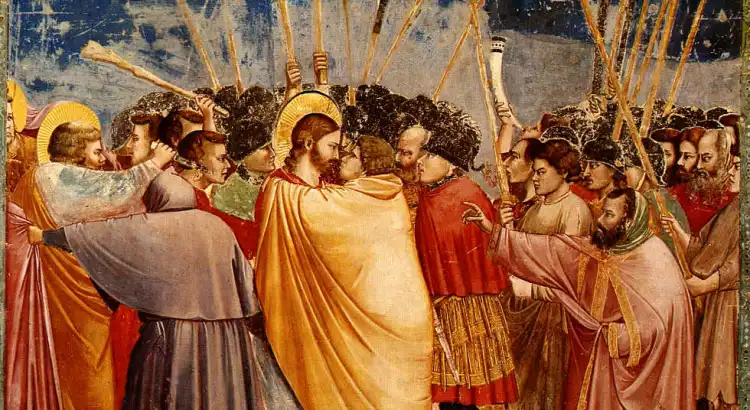Question:
An acquaintance asked me about the original sin and I referred to the story as it is found in the book of Genesis in the Holy Bible, but he answered me that the interpretation should not be literal because the original sin would have been that Adam and Eve had sex and that it was not very clear that this sin was transmitted to the children, and that this teaching is not shared by any other people. I really did not know what to answer. I would be grateful if you could explain to me what is really certain about this subject in the Bible and how we Christians should understand this mystery of original sin.
Response:
If there is one thing that is striking in the history of peoples and religions, it is precisely the fact that almost all the mythologies of the peoples of the earth present three fundamental ideas that are constantly repeated: the idea of a happy state of primitive humanity; the idea of a catastrophe originating in a sin; and the idea of a subsequent degradation of all human nature. This is repeated in such culturally disparate stories as the Hellenic myths of Prometheus, Pandora, Deucalion, Pyrrha, the rebellion of the Titans and Atlantis. It also appears in the mythical Japanese story of the demigods Izanayi and Izanami, in the Fuegian myths of the creation of the world by “Peheipe”, the Great Spirit and the analogues of the Californian redskins. The same substratum can be found in Indian and Chinese pessimistic religions.
This, together with the nostalgia that all civilizations have for a Lost Paradise (the search for which has been the motor of humanity, of its revolutions and utopias) and the inexplicability of physical and moral evil, explain why this is one of the most firmly held and repeated ideas throughout the history of humanity. I don’t know where your friend gets that this is not found in other peoples and cultures.
In the book of Genesis there are two complementary accounts; the first is in Gen 2:8-17; the second in Gen 3:1-24. It is evident that the sacred author uses many images here, which is why some theologians have wanted to see in this whole account a simple image or figure and not the account of a true fact. It must not be denied that the proper genre of this biblical passage has offered difficulties since ancient times. Philo did not accept its total historicity, and it was followed by some Catholic writers such as Origen; St. Augustine distinguished in his time several different modes of interpretation. Nevertheless we can establish at least the following[1]: (a) it is a story of a special kind, different for example from that of the book of Kings; this is deduced from the same expressions about God, about the serpent, about the tree of life and about the tree of the knowledge of good and evil; the anthropomorphisms it contains with respect to God are evidently clear; (b) but it is not an allegory, but rather the account of a real fact presented in some of its aspects under a metaphorical genre, from which the real fact is deduced. Its historicity is deduced from the seriousness of the very character of the book of Genesis, which is a work of religious history and therefore nothing authorizes us to think that its beginning is a simple story. Moreover, it is evident that for the Author of the Book of Genesis, this story is the key that clarifies the mystery of the whole of human history that follows the book of Genesis.
The inspired author, in this story, pursues a very precise goal: after having explained the creation of man, he explains the reason for the current state of affairs through the moral fall of the first human couple.
What are the essential elements found in this story?
(a) State of innocence and immortality. The first man and the first woman are presented, as Marie-JosephLagrange points out, as children insofar as they have not experienced concupiscence, and at the same time as extremely mature with respect to the security of their intelligence.[2] In order to understand the mystery of original sin, it would be necessary to understand the perfection of Adam. Genesis indicates his character with only three features, but of an inconceivable splendor: bodily immortality (if you eat of this fruit you will die), the sovereign dominion of the animal instinct (they were naked and did not blush) and a special science that gave authority over the animal kingdom itself (God brought the beasts to Adam so that he could name them). The man of the garden was immortal, and he was so by virtue of his intimate cognitive union with the Creator, that is, inasmuch as he was a contemplative of God. The story also highlights man’s familiarity with God, like the freedom that a son has with his father. The happiness of this innocence in God’s friendship was destined to be lasting, since the fact that the threat of death is formulated (Gen 2:17), remembered (3:17) and sanctioned (3:24) indicates that man was gratified with the privilege of immortality. But this state of innocence and immortality was conditioned by a test.
(b) The test. Man was given a condition: to submit to the divine precept that forbade the eating of the tree of the knowledge of good and evil, with the consequent renunciation of such knowledge. The sin described by the text is neither a sin of gluttony nor a sexual sin. The account is particularly clear: The woman saw that the tree was good for food and pleasing to the eyes, and the tree was desirable for gaining wisdom (3:6). The text means more than it simply says. There is no fruit that is endowed with such an attribute that makes us wise. These two expressions: “tree of the knowledge of good and evil” and its capacity to “give wisdom”, show us clearly that the sin of Adam and Eve is a “gnostic” sin, that is, a sin of knowledge, of intellectual pride. The whole dialogue of the temptation refers to the spiritual plane of man: Eve sees that the fruit was desirable to acquire intelligence. The serpent’s promise is knowledge: your eyes will be opened. The result of sin is knowledge: they knew that they were naked. Man will be tempted precisely in his appetite for knowledge, by the serpent, the mysterious animal that behaves as a power hostile to man and to God, consummated in the art of deception of which he makes the woman a victim (3:2-5).
(c) Essence of temptation. To understand the nature of temptation and the sin of the first parents, it is necessary to understand the meaning of the “knowledge of good and evil” that is forbidden to them by God and that they seek to acquire, encouraged by Satan.[3] First of all, it is a phenomenon of the order of knowledge and is not related to gluttony or lust. In the fruit, Eve wants wisdom; the supreme wisdom is the vision of God, the possession of God through knowledge and love; Eve does not seek a natural knowledge, since she knew that all natural knowledge is reserved to the natural exercise of human intelligence; she seeks then a supernatural wisdom. This is what the serpent seems to indicate, for he tells her that this knowledge would make them like God. Therefore, what Eve and then Adam seek in that fruit is the mystical possession of God but through their natural forces; no longer as a gift of God but as a personal acquisition. Also to be assimilated to the creative wisdom of God: creator of good and evil; that is, the power to determine what is good and what is evil, to legislate and to create morality.[4] Therefore, the sin committed, in terms of its matter, implies the profanation of the sacred: of sacred knowledge and sacred law and of the sacred power of God. And therefore, the punishment is death, which in Scripture was the punishment proper to profaners. It should also be noted that Eve’s state of spiritual perfection is made manifest in her innocence in the face of what will be the object of her temptation: she has no disordered inclinations toward that object (the act that will give her wisdom) so she must be moved from without by a force hostile to God. In this story appears both the evil and personal character of the serpent -personification of the devil- and the fact that Eve (and Adam) are upright by the grace that has perfected their nature.
(d) The fall and its consequences. The fruit of sin is the opening of their eyes, but not for a superior knowledge, source of new happiness, as the serpent had promised, but to make them experience the pain of what they have lost. The realization of their nakedness also means to be naked with respect to innocence: they are naked in a different way than they were before sin, because the new nakedness includes a spiritual deprivation. God punishes the woman in her intimate quality of wife (subjection to the husband, which here includes a degrading sense) and mother (to give birth with pain); the man is punished in his lordship over creation, which will produce fatigue and difficulty to subdue; both are ultimately punished with death, which acquires a penal character and with the loss of Paradise as a proper place.
The following theological conclusions may be drawn from this account:
- Originally, man had a blissful life of innocence and familiarity with God, destined to an immortal life.
- Tempted by an evil power, hostile to man and enemy of God, he transgressed a divine precept.
- After his fall, a feeling of shame, shame, repentance for the fall, and a life of suffering, hardship and finally death is born.
- The tempting power will continue to lie in wait for man, but God promises the victory of the woman’s offspring (Jesus Christ, as St. Paul later clarifies) over the evil one (the serpent).
Although it must be recognized that the concept of an original guilt transmitted to the descendants of the first couple (explicitly revealed in the New Testament) is not mentioned here, nevertheless, the idea of a change acquired by the human race in its relationship with God from this moment on is clear. The expulsion from Paradise weighs on the whole human race and not only on Adam and Eve.
It is also a real sin, which produces, therefore, a detriment in the man who commits it. Man knew how to distinguish between good and evil, otherwise he could not have been subjected to a moral test. In temptation, therefore, man wants to acquire knowledge through a kind of experience of moral good and evil. But to know evil experientially is to possess it in a certain way in oneself. Therefore, the divine prohibition was a test, but a test for the good of man.
This sin, or the forbidden act, was not a carnal act, because prior to sin, friendship with God guaranteed the state of innocence. It is therefore an act of the spirit: it is a sin of pride and at the same time of disobedience to God.
It must be recognized that the full revelation of original sin (as sin committed by the one who is the beginning of the whole human race and transmitted to his descendants) is found in the New Testament, particularly in St. Paul (cf. Rom 5:12-21).
St. Paul, trying to show that all men are in sin, therefore, all need to be saved by Christ, indicates the reason for this universal sinfulness: all have sinned in Adam, and from Adam sin has been derived to all men, even those who have not reached the use of reason (which is a condition to sin, that is, to act humanly).
St. Paul’s reasoning can be summarized in two theses:
- Through one man, Adam, sin entered the world and with sin death, and both sin and death infected all men. Why? Because “all sinned”. How is this proved? From the universality of death and the relation of death to sin.
- Through one man, Christ, grace and life (spiritual and eternal) also come to all men.
A particular strength of the argument lies in the relationship that St. Paul establishes between sin and death: through Adam sin entered and through sin death. From this he deduces two consequences: wherever the presence of death is noted, it must be deduced that there has been sin; and furthermore, it cannot be a relationship only with respect to sins committed with the use of reason (personal sins), since many are affected by death before reaching this state. This way of reasoning supposes, evidently, that death is not something natural to man, or at least that it is not something that, in God’s plan, should have affected man, but that it exists because man has sinned.[5]
Therefore, death came to all “because all have sinned”. The universality of death is a datum of experience: it affects all men. Therefore, from the universality of punishment must be deduced the universality of the guilt for which the punishment is assigned.
Now then, St. Paul continues, all have sinned, but what sins are we talking about? The sins that each one commits with full awareness? The transgressions of the Law that each one commits knowingly? It cannot be, because: (a) death has affected those who lived before God promulgated the Law (through Moses) that threatened death, therefore those who sinned before Moses would be punished with a punishment of which they had not been warned (which would be unjust); (b) it has affected and affects those who do not reach the point of conscious acts (children). What sin is involved? The only sin that, prior to the law of Moses, was threatened with death was the sin of Adam and Eve.
In some mysterious way this sin passes from Adam to all other men. Otherwise, it could not be explained that it is found in those who have not “imitated” Adam (children and the righteous). This need for sin to “pass” raises at the same time the need for the existence of a link between Adam and all other men. This nexus is none other than the “descent” that all men have with respect to the first man. This sin, therefore, is not committed personally (except Adam), but is contracted. That is why the Psalmist says: Indeed, I was born guilty, a sinner when my mother conceived me (Psalm 51:5).
And yet, while this sin is “received”, it is also in a certain sense “ours”, since St. Paul clearly affirms that all die (punishment of original sin) because all sinned. It will be theology that will have to delimit in what sense this sin that we receive at the moment of our conception is “ours”. It is theology, deepening these elements, which explains that this sin is an entitative habit that consists formally in the deprivation of original justice (the state of grace and preternatural gifts in which God constituted our first parents) and materially in concupiscence[6]. We can say it in the words of St. Albert the Great: “What is material in original sin is the ugliness of concupiscence or corruption of vice…; what is formal, on the other hand, is the lack of due justice. Nature lost the justice, which was proper to it and in which it had been created, for all those in whom it is required, as Anselm says; therefore, as can be inferred from Anselm’s words, it can be defined as follows: original sin is ‘the inclination to all evil with the lack of due justice’. This definition belongs to some ancient Doctors, but it has been extracted from Anselm. Insofar as it says: ‘inclination to all evil’, it means inclination to conversion to the commutable good and not conversion, because what is original has conversion only in potency… Aversion, on the other hand, has it in act and this is expressed by saying ‘lack of justice’. If one were to say that it is ‘only lack’ of justice, one would be expressing only the penalty of harm; but as soon as one adds ‘due’, one indicates the reason for the fault…”[7]
Between Adam’s original sin and ours there are, however, some differences. Adam’s sin consisted in an act and in a state consequent to it. On the other hand, original sin in us does not consist in an act, but only in a state; regarding Adam’s descendants: “Nor are they said to have sinned in him as exercising any act, but so far as they belong to Adam’s nature which was corrupted by sin.”[8] The Catechism of the Catholic Church says: “Original sin is called “sin” only in an analogical sense: it is a sin “contracted” and not “committed” – a state and not an act.”[9]
Fr. Miguel A. Fuentes, IVE
Bibliography
- Cathechism of the Catholic Church, 386ff.
- Gaudel, Péché originel, Dictionaire de Théologie Catholique, XII, 1, col. 275-606 ;
- Henri Rondet, Original sin: The Patristic and Theological Background (Alba House, New York, 1972).
- Alberto García Vieyra, El paraíso o el problema de lo sobrenatural, Ed. San Jerónimo, Santa Fe, 1980.
[1] ] The Biblical Commission on June 30, 1909, in response to an inquiry about the character of the accounts contained in the first three chapters of Genesis, clarified that (cf. DZ 2121 – 2128 (DS 3512-3519)):
1) The first three chapters of Genesis contain stories about real events and not myths or pure allegories or symbols of religious truths, nor legends. 2) When it is a question of facts that concern the foundations of the Christian religion, the literal and historical sense must be accepted. Thus, for example, the creation of all things by God at the beginning of time and the special creation of man. 3) It is not necessary to understand in the proper sense each and every word and phrase, especially those that the Church Fathers and theologians have interpreted in different ways. 4) It must be kept in mind that the hagiographer did not intend to set forth with scientific rigor the order in which things were accomplished, but for this purpose he made use of a popular mode of expression adapted to the language of his time.
[2] J.M. Lagrange, L’innocence et le péché, en: Revue biblique, 1897.
[3] Cf. Alberto García Vieyra, El paraíso o el problema de lo sobrenatural, Ed. San Jerónimo, Santa Fe, 1980, pp. 42-45.
[4] That is why St. Thomas writes: “the first man sinned chiefly by coveting God’s likeness, as regards knowledge of good and evil, according to the serpent’s instigation, namely that by his own natural power he might decide what was good, and what was evil for him to do.” (Summa Theologica, II-II, q163, a2, corpus).
[5] We said before that this is how it is presented in the Genesis account: God “threatens” death only if man eats from the forbidden tree; and then in declaring Adam’s penalty, he puts the death they will suffer in relation to the transgression committed. Even more clearly it is stated in the book of Wisdom: for God created man for incorruption, and made him in the image of his own eternity, but through the devil’s envy death entered the world,
and those who belong to his party experience it. (Wis 2:23-24)
[6] Cf. Summa Theologica, I-II, q82, a3. “Concupiscence” does not mean here a tendency toward an illicit object, nor toward carnal delectation, but the tendency of the lower powers toward their proper object-which can be licit and not necessarily evil-but in a disordered way (cf. S.Th., I-II, 82, 3 ad 1), that is, acting outside of the will and reason.
[7] St. Albert the Great, II Sent., d. 30, art. 3. (Translated from Spanish).
[8] St. Thomas Aquinas, Summa Contra Gentiles, IV,52.
[9] Catechism of the Catholic Church, n. 404. The most important Magisterial text is the Decree of the Council of Trent Session V, June 17, 1546 (D. 1510 (Dz 787) to 1516 (Dz 792)). It was admirably summarized by St. Paul VI in the Creed of the People of God, Profession of Faith pronounced on June 30, 1968.
Original Post: Here
Related Post: Are there sins that don’t offend God?

